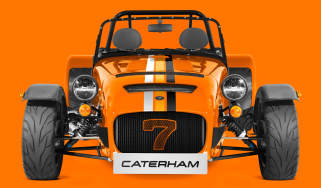evo's ultimate all-wheel-drive test – Video, contenders and podcast
In issue 333 of evo, seven traction-unlimited titans come together, allowing us to explore the virtues of modern all-wheel-drive systems
The face of all-wheel-drive performance has changed. No longer employed purely as a mechanical means of sharing the division of labour between front and rear axles, the single-minded pursuit of raw traction has been transcended by a more nuanced objective. Pragmatism still plays a part, as today’s all-wheel-drive systems are charged with taming the ever-increasing power and torque outputs of immensely potent ICE, hybrid and EV powertrains. But now they also play a pivotal role in actively shaping handling behaviour and broadening dynamic bandwidth.
Highly configurable driving modes employing sophisticated electronic control systems mean a dizzying degree of adjustability is now at our fingertips. Torque vectoring is commonplace, and when this is combined with the equally powerful effects of rear-wheel steering, it delivers a level of rotational energy and steering response old-school all-wheel drive could never hope to match.
The purpose of our test? To gather a diverse array of heavy-hitting all-wheel-drivers and explore the full scope of their performance and handling in a controlled environment (in this case the wonderful Anglesey Circuit). It’s also a celebration of sorts; proof that although high-performance cars are facing an existential threat, the will to build cars aimed at enthusiasts remains as strong as ever.
The scope of our group spans a mouth-watering range of cars, starting with the Audi RS3. This pleasingly pugilistic Audi might represent the bottom rung of our all-wheel-drive performance ladder, but it still enjoys rippling bhp and lb ft numbers that my aged brain associates more with ’90s mid-engined exotics than a souped-up compact saloon.
Top of our ladder is the scintillating Lamborghini Revuelto. Packed with technology, it boasts the same power as a Bugatti Veyron, with three electric motors and Sant’Agata’s mighty new 6.5-litre V12 doing the job of Molsheim’s 8-litre quad-turbo W16.
Porsche 911 Carrera 4, here in latest hybrid Carrera GTS spec, and Bentley’s all-new hybrid Continental GT Speed represent the sports and luxury coupe sectors, while a more hardcore offering comes in the muscular form of the M4 CS, built around BMW’s pioneering xDrive system. Mercedes-AMG's GT63 is even more of a slugger, mating its 4-litre biturbo V8 to Mercedes’ similarly configurable 4Matic+ system.
Finally, towering over the lot is JLR’s monster Range Rover Sport SV. Using ‘6D’ interlinked hydraulic suspension along with torque vectoring and an active rear diff, the 626bhp 2.5-ton SUV combines supercar tech with super-luxury stature.
Rear-drive cars remain the purest driving experience, of course, and will always be very special. All-wheel drive brings a different set of abilities and a feel of its own, which can be similarly enthralling. The seven cars here show that, at the mid-point of the 2020s, AWD has the capability to be more nuanced and rewarding than ever. The fascinating thing is to see where ever-improving software, increasingly fluent conversations between chassis and drivetrain, and the evolution of torque vectoring – particularly in cars with electrified axles – will lead. It may be less than seven years before we see an even more seismic shift.
To read the full test, pick up a copy of evo 333 in-store or online.


